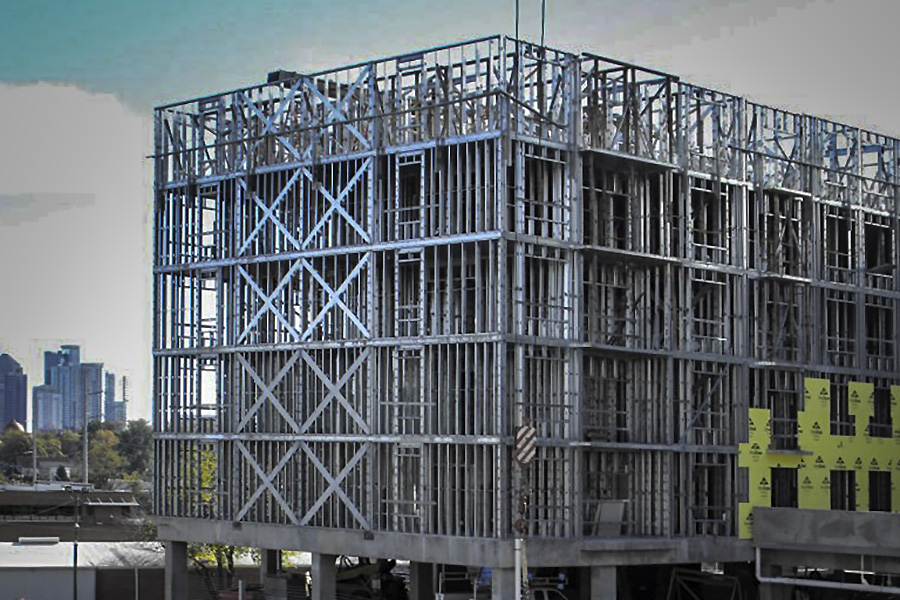In today’s fast-paced business environment, the significance of industrial buildings and commercial units cannot be overstated. These structures serve as the foundation for various industries, providing the necessary infrastructure for manufacturing, distribution, retail, and office operations. From sprawling warehouses to bustling retail spaces, the landscape of industrial and commercial real estate continues to evolve, driven by changing consumer preferences, technological advancements, and economic dynamics.
Types of Industrial Buildings
Industrial buildings encompass a diverse range of facilities tailored to meet the specific needs of different sectors. Manufacturing facilities house production lines and equipment, while warehouses serve as storage hubs for raw materials and finished goods. Factories combine manufacturing and assembly processes under one roof, streamlining production workflows. Distribution centers play a pivotal role in supply chain management, facilitating the efficient movement of goods from manufacturers to consumers.
Features and Design Considerations
When designing industrial buildings, several factors must be taken into account to ensure optimal functionality and efficiency. Location plays a crucial role in determining accessibility to suppliers, customers, and transportation networks. Adequate space is essential to accommodate production equipment, inventory storage, and operational workflows. Structural integrity is paramount to withstand heavy machinery and storage loads, while utility services such as power, water, and waste management must be readily available.
Importance of Location in Industrial Building Selection
The strategic location of industrial buildings can significantly impact operational costs, supply chain logistics, and market reach. Proximity to suppliers reduces transportation costs and lead times, enhancing overall efficiency. Likewise, easy access to major highways, ports, and railroads facilitates the movement of goods to regional and international markets. However, local regulations and zoning laws must be considered to ensure compliance and mitigate potential land-use conflicts.
Commercial Units: Versatility and Appeal
Commercial units encompass a wide range of properties designed for retail, office, and mixed-use purposes. Retail spaces cater to consumer needs, offering a diverse selection of products and services in convenient locations. Office buildings provide professional environments for businesses to conduct meetings, collaborate, and innovate. Mixed-use developments integrate residential, commercial, and recreational elements, creating vibrant urban communities that thrive day and night.
Factors to Consider When Choosing Commercial Units
The selection of commercial units requires careful consideration of various factors to align with business objectives and customer preferences. High foot traffic and visibility are essential for retail establishments to attract potential customers and drive sales. Amenities such as parking, security, and maintenance services enhance the overall shopping experience and tenant satisfaction. Lease terms should offer flexibility to accommodate changing business needs and market conditions.
Design and Layout Enhancements
The design and layout of commercial units play a crucial role in shaping the customer experience and brand perception. Interior design elements such as lighting, signage, and decor create inviting atmospheres that encourage exploration and engagement. Strategic placement of merchandise displays and checkout counters optimizes traffic flow and encourages impulse purchases. Accessibility features such as ramps, elevators, and ADA-compliant facilities ensure inclusivity and convenience for all visitors.
Trends Driving Industrial and Commercial Development
The evolving landscape of industrial and commercial real estate is shaped by emerging trends and market forces. Sustainable design practices promote energy efficiency, waste reduction, and environmental stewardship, aligning with corporate social responsibility initiatives. Technology integration enhances operational efficiency and tenant satisfaction through smart building systems, IoT devices, and data analytics. Adaptive reuse of existing structures revitalizes urban spaces, preserving architectural heritage while meeting modern demands.
Investment Opportunities and Challenges
Investing in industrial and commercial real estate offers unique opportunities for wealth generation and portfolio diversification. Rental income from tenants provides a steady stream of cash flow, while property appreciation yields long-term capital gains. However, economic fluctuations, regulatory changes, and evolving consumer preferences pose challenges for investors and developers alike. Adapting to market trends and leveraging innovative strategies is essential to mitigate risks and maximize returns.
Case Studies: Exemplars of Success
Several notable case studies exemplify the successful development and management of industrial and commercial properties. From iconic skyscrapers to adaptive reuse projects, these examples showcase best practices in design, sustainability, and tenant engagement. By studying these cases, industry professionals can gain insights into effective strategies for maximizing asset value and enhancing tenant satisfaction.
Future Outlook and Opportunities
Looking ahead, the future of industrial buildings and commercial units is ripe with opportunities for innovation and growth. Advancements in technology, such as automation, robotics, and AI, will revolutionize production processes and supply chain management. Shifts in consumer behavior, driven by e-commerce and omnichannel retailing, will reshape the demand for industrial and retail spaces. Embracing these changes and adapting to evolving market dynamics will be essential for businesses to thrive in the digital age.
Conclusion
In conclusion, industrial buildings and commercial units serve as essential components of the built environment, supporting economic growth and urban development. From manufacturing facilities to retail storefronts, these structures provide the physical infrastructure necessary for businesses to thrive and innovate. By understanding the unique requirements and opportunities associated with industrial and commercial real estate, investors, developers, and tenants can unlock value and drive sustainable growth in the years to come.
